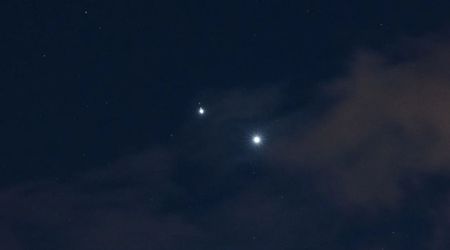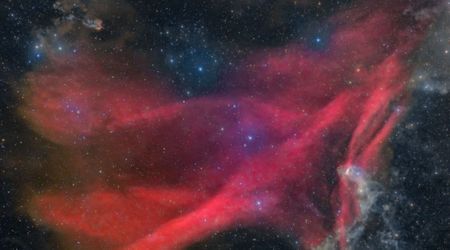Massive solar flare bursts from the sun cause radio blackouts across parts of North America

A highly active sunspot currently facing Earth has been busy, unleashing numerous powerful M-class solar flares and several smaller C-class eruptions in under 24 hours. The most significant of these events occurred on June 15, peaking at 2:25 p.m. EDT (1825 GMT), as reported on Space.com.
A G3 (Strong) geomagnetic storm warning has expired as of 13/0600 UTC. A G2 (Moderate) geomagnetic storm warning remains in effect until 13/1200 UTC primarily due to proximity CME influences. pic.twitter.com/MeJ5DVRRKy
— NOAA Space Weather Prediction Center (@NWSSWPC) June 13, 2025
This intense M8.46-class solar flare was just shy of the strongest X-class category. It also triggered a coronal mass ejection (CME), a large expulsion of solar plasma and magnetic field. A portion of this CME is now heading towards Earth, with Spaceweather.com predicting its flank could reach us by June 18. Should the CME impact Earth, space weather experts anticipate minor (G1-class) geomagnetic storm conditions. This could lead to visible northern lights (auroras) extending as far south as northern Michigan and Maine.
A G2 (Moderate) Geomagnetic Storm Watch has been issued for 14 June 2025 (UTC day) due to the arrival of a Coronal Hole High Speed Stream (CH HSS). The associated CH produced upper level G2 (Moderate) geomagnetic storming conditions last rotation. pic.twitter.com/SbUhMrFu2g
— NOAA Space Weather Prediction Center (@NWSSWPC) June 11, 2025
Solar flares themselves are intense bursts of electromagnetic radiation that occur when magnetic energy built up in the Sun's atmosphere is suddenly released. They are categorized by strength: X-class are the strongest, M-class are ten times weaker, and C, B, and A-class are progressively weaker, with A-class flares usually having no noticeable effect on Earth. Within each class, a number indicates the flare's specific strength, making the M8.46 flare on June 15 a near X-class event. Additionally, because the radiation from these flares travels at the speed of light, it reaches Earth in just over eight minutes. Upon arrival, this radiation ionizes the upper atmosphere, specifically the thermosphere. This ionization can lead to disruptions in shortwave radio communication on the side of the planet currently facing the Sun. When the powerful M8.46 solar flare occurred, North America was directly facing the Sun, putting it in the prime position for the resulting shortwave radio blackouts.
This active sunspot region isn't showing any signs of slowing down. It released yet another significant flare, an M6.4, early on June 16 at 5:30 a.m. EDT (0930 GMT), and it's still facing Earth. This means we could see more solar flares—and possibly more Coronal Mass Ejections (CMEs)—in the coming days. If these events happen, our planet remains in the strike zone of this highly active area, potentially giving us more opportunities to witness northern lights displays.
Strong M8.46 flare from sunspot region 4114
— SpaceWeatherLive (@_SpaceWeather_) June 15, 2025
Follow live on https://t.co/3Xxrvc3cpA pic.twitter.com/VLqNlGgCEi
ALERT: X-Ray Flux exceeded M5
— NOAA Space Weather Prediction Center (@NWSSWPC) June 16, 2025
Threshold Reached: 2025 Jun 16 0935 UTC
NOAA Scale: R2 - Moderate
Issue Time: 2025 Jun 16 0938 UTChttps://t.co/ZbtuNtIFJC
The same solar activity that's been generating powerful flares also led to a spectacular showing of the northern lights, visible unusually far south. This was a direct result of intense space weather and geomagnetic storm conditions impacting Earth. Our planet experienced the effects of a solar storm on the night of June 12-13, which led to moderate G2 geomagnetic storm levels. Adding to this activity, a turbulent area within the solar wind, known as a co-rotating interaction region (CIR), also influenced Earth around June 14.

Both NOAA's Space Weather Prediction Center (SWPC) and the UK Met Office had accurately predicted these moderate (G2) geomagnetic storms for June 13-14, anticipating the activity would lessen to unsettled levels by June 15-16. A G2-level geomagnetic storm causes the aurora oval, the usual zone where auroras form, to expand southward. This expansion offers skywatchers and observers in part of the northern US a potential chance to see the elusive northern lights, assuming clear skies and minimal light pollution.









